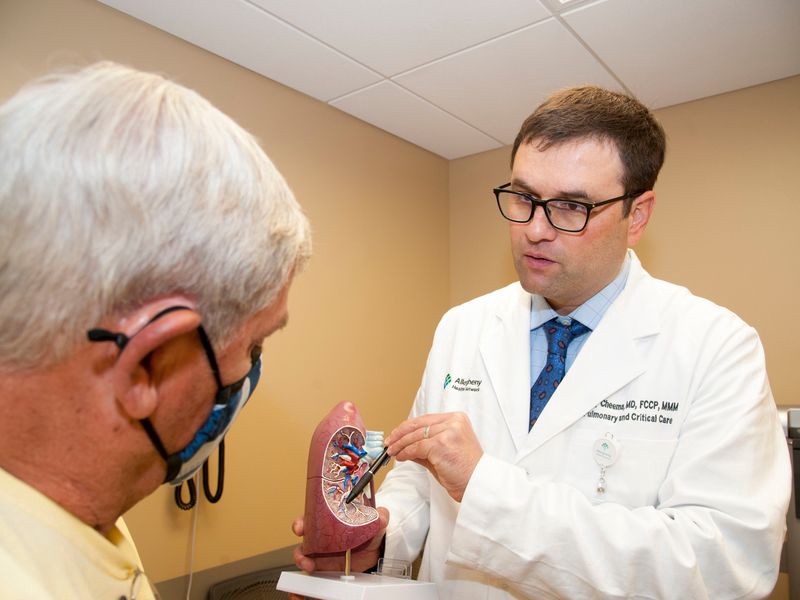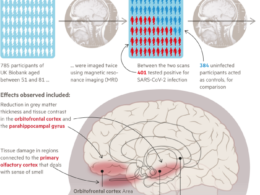Modern Healthcare
July 21st, 2021
Edward-Elmhurst Health’s post-COVID-19 program opened July 6, and the system estimates it will see around 650 patients during this fiscal year.
Post-COVID-19 Patients are integrated into 12 neurologists’ weekly calendars for 24 appointments that are held open until demand goes down.
These neurologists were already seeing the bulk of post-COVID-19 cases, and they refer patients to other in-house specialists as needed.
Norton Children’s Hospital in Louisville, Kentucky, integrated its post-COVID-19 clinic for kids and adolescents in conjunction with its infectious disease clinic.
Initial visits last an hour and clinicians collect detailed histories from patients. Because post-COVID-19 care remains fairly undocumented due to its novelty, it made sense to triage initial referrals to infectious disease specialists, said Dr. Daniel Blatt, a pediatric infectious diseases physician.
“There are plenty of times where people come in with long COVID-19 symptoms from their primary care doctor, and then we diagnose them with something different,” Blatt said. “That’s where having an infectious disease specialist really, really helps out.”
Norton Children’s doesn’t require patients to have had a positive COVID-19 test in the past to access the clinic. “If we had to rule it out ahead of time, it wouldn’t be a very effective clinic because we would miss some people, and we would also bias our judgment ahead of time,” Blatt said.
“But obviously lab tests that we get ahead of time help our diagnosis. The more information we get, the better.”
The Cleveland Clinic has limited patients to referrals from within its system and to people who previously tested positive for COVID-19, in large part because of the huge demand.
What started off as a small clinic at an outpatient practice with one advanced practice provider and one physician assistant has grown into its own office with three additional doctors, a full-time nurse, a technician and one receptionist and scheduler.
“We’re trying to limit down the scope a little bit so that we don’t completely open the floodgates. We realize there’s a huge demand for this,” Lago said. “Eventually, we will open up to patients outside of the clinic and we’ll be able to take people who have supposed COVID that we have no way of proving.”
Another reason some systems are limiting post-COVID-19 recovery care to people with a documented history of the disease is insurance coverage.
Insurance companies only assigned a diagnosis code for post-COVID-19 pulmonary rehab therapy at the Allegheny Health Network about six weeks ago, for instance.
The Allegheny Health Network has had to figure out ways to get treatment covered for patients who never tested positive for COVID-19 and were never hospitalized-who, for example, caught the virus at the beginning of 2020 when there was no testing.
That might entail administering cardiopulmonary exercise tests to measure breathing and heart functioning, which can uncover problems that aren’t detectable when patients are at rest.
And insurers often resort to the oldie-but-goodie method of limiting access to treatments: step therapy.
“You have a patient who’s coming in with shortness of breath or a cough, and you want to get a CAT scan because we know that both post- COVID can affect the lungs pretty rapidly, but there are a lot of insurance companies that will not actually allow you to get those CAT scans” because the diagnostic test isn’t usual for someone with just that symptom, Cheema said. “We will have to get smaller tests like a chest x-ray that shows issues and leads to an insurance company approval. It’s not clear cut as it would be in any other disease.”
Cheema estimates that post-COVID-19 will join the ranks of COPD, heart failure and diabetes as one of the most common chronic diseases in the U.S., with billions of dollars spent on these patients.
And depending on how the pandemic progresses in parts of the country where it’s resurging, these clinics might stick around for quite a while.
At New Jersey specialty hospital Deborah Heart and Lung Center, patient volume expectations exceeded initial projections by almost 50%, said John Hill, vice president of pulmonary services.
The hospital will run the numbers in November to determine if its integrated clinic will become an established part of the pulmonary clinic that’s opening next February, he said.
Deborah Heart and Lung Center is seeing the need for this care diminish as the vaccination campaign continues, access to monoclonal antibodies improves and masking rules are in place in certain settings, Hill said.
Still, the hospital’s post-COVID-19 program is seeing about three new patients a week, including those traveling from New York, Delaware and Pennsylvania. Deborah Heart and Lung Center physicians can treat heart and lung-related symptoms, and they refer patients to neurologists closer to home for those symptoms.
Health systems are likely to maintain their post-COVID-19 programs and clinics for at least another year, their representatives said.
In addition to generating revenue, these clinics can bolster the chains’ regional reputations.
“We’re getting notoriety and clout as the premier place for children with long COVID to go get treatment,” said Blatt from Norton Children’s. “And we didn’t have to invest a lot to do it. We just had to be thoughtful about it.
Originally published at https://www.modernhealthcare.com on July 21, 2021.











